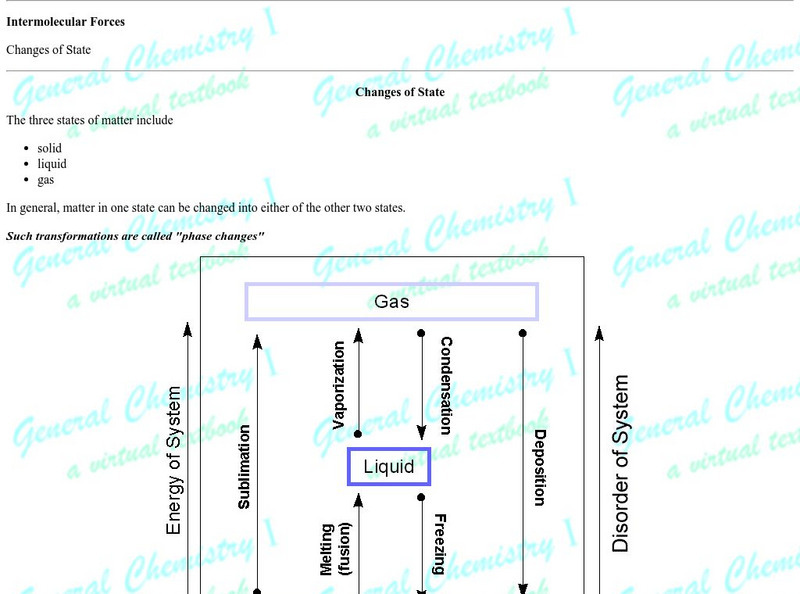Curated OER
Ice Ain't Easy
Students are introduced to the laws of thermodynamics. The 1st law of thermodynamics states that the energy must be conserved when two objects of different temperatures come in contact. If one object gains energy, the other object must...
Curated OER
Ice Ain't Easy
Pupils are told that objects in contact with one another reach an equilibrium temperature. A hot object placed in a cool liquid always cool off. It never happens that the object gets hotter and cool liquid gets colder. Students predict...
Texas Instruments
Texas Instruments: Warming Up to Heating Curves
In this activity, students use the CBL 2 to collect temperature data as a sensor warms up in a cup of water. They find an appropriate mathematical model for the resulting data set.
Michael Blaber, PhD
Florida Sate University: Changes of State: Heating Curve for Water
Discusses the phase changes and heating processes of water and how this can be illustrated with a heating curve.
Chem Tutor
Chem Tutor: Chemistry: States of Matter
This lesson focuses on the states of matter: solids, liquids, and gases. It also discusses the Kinetic Theory of Matter, Thermodynamics, Triple point, Phase Change Graphs and the Heating Curve of Water. It provideds adrawing of a heating...
CK-12 Foundation
Ck 12: Plix Series: Heating and Cooling Curves
[Free Registration/Login Required] Use the interactive cooling curve graph as a tool to answer two challenge questions about temperature change in the fossil fuel, Naphthalene.
Other
King County Court House: Heating & Cooling Curves [Pdf]
This page is a lab that will teach you about heating and cooling curves.
Chem Tutor
Chemtutor: Heating Curve Problems
Nice set of problems dealing with the concept of a heating curve. Students can click on the question and get immediate feedback on their answer.







